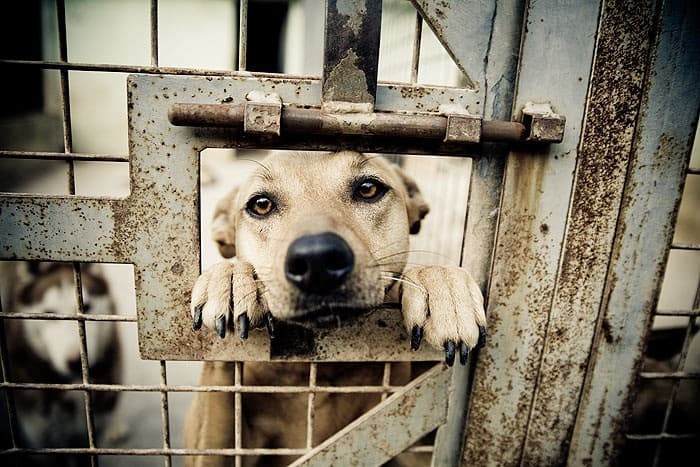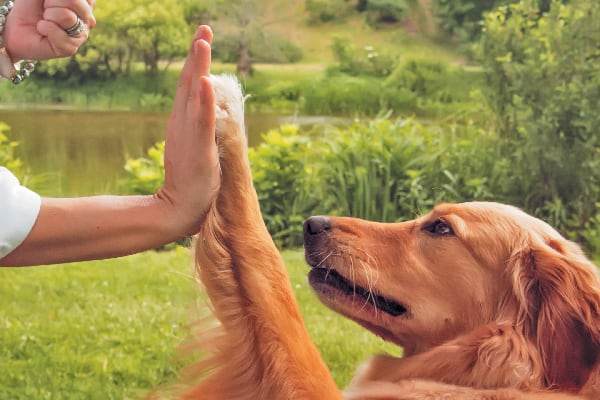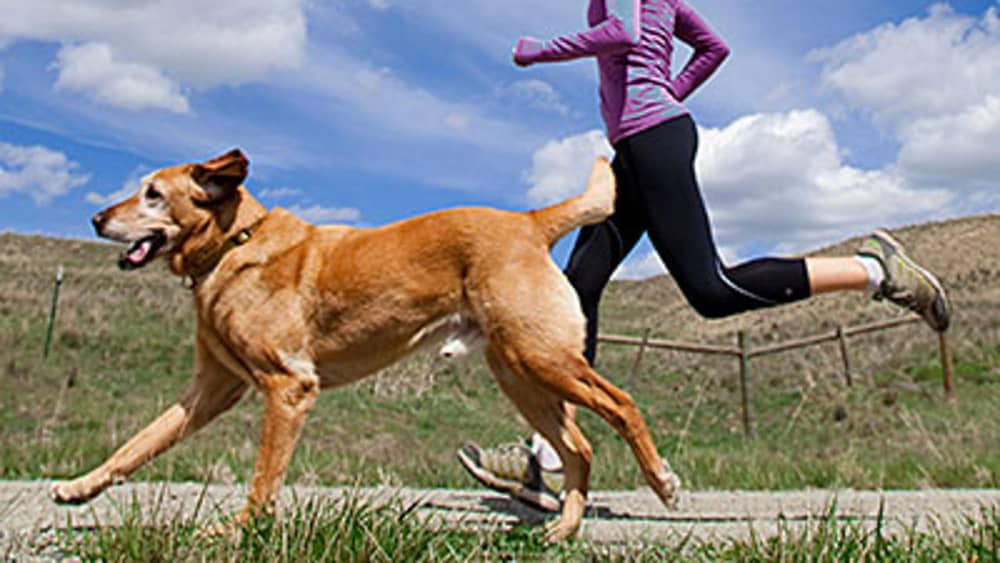Have you and your family always wanted to get a dog? Has your apartment seemed empty without the addition of a pet to keep you company after long hours of work? It is very tempting to adopt a pooch. Almost everyone has a dog, if not multiple dogs and other pets altogether in their living space.
But often, there are considerations that the newfound owner(s) of the dog have not taken into account before they adopted the dog and so they have to either find a new home for it, leave it at a shelter, or at the worst, just abandon the dog. Before you decide to adopt any pet, let alone a dog, you should take the time to research the type of dog you are getting.
What is the breed? What are its habits and mannerisms? Is it a high energy breed? Are you and your family in agreement over care for the pet? If you live alone, does your lifestyle and schedule leave you time to adequately take care of and spend time with the dog you chose?
Common Considerations Before Adopting a Pooch
- What type of dog they buy (not just the breed, but also shelter vs. a newborn puppy)
- How much time the dog needs to adjust to their surroundings
- The type of training and positive reinforcement of good behavior needed
- Not researching the best diet and lifestyle requirements for the dog
- Not being consistent in your behaviors towards the dog
What Type of Dog Are You Prepared to Care For?
When you decide to get a dog, the very first thing you decide regarding the dog is the “type” of dog you want to get. This is not referring to the breed, but more about the age and where the dog comes from.
Do you want to get a puppy from a private breeder who has papers documenting that status, or do you just want to go down to the shelter and pick a dog that is already trained–or even a dog that is in between e.g. a shelter puppy?
There are many options you can go with and those options will depend on your lifestyle choices.
Energy Levels According to Dog Breed
Different dog breeds have different energy levels e.g. low energy and high energy.
One of the biggest mistakes made is not choosing a dog that fits with your lifestyle and the attention and care you are able to give.
According to Dogtime, there are different energy levels for different breeds of dog.
Low energy dog breeds include:
- Basset Hound
- Bulldog
- Bull Mastiff
- Caucasian Shepherd Dog
- Cesky Terrier
- Chow Chow
- Pekingese
High energy dog breeds include:
- Chesapeake Bay Retriever
- Barbet
- Newfoundland
- Otterhound
- Poodle
- Boykin Spaniel
Shelter vs. Breeder & Adult vs. Puppy
Patience is needed for a puppy, whether it is a shelter or a breeder puppy
An older dog can have ingrained habits that they cannot break out of e.g. climbing on the furniture
Shelter dogs can have backgrounds you are unaware of, which can manifest into aggression, etc
One of the earliest things that can go wrong is choosing the wrong type of dog. If you don’t have the time or patience to house train a dog, or pay for them to be trained, then you probably should not get a puppy–whether it’s from a breeder or a shelter. If you buy a dog from a shelter, then you might have to handle a dog that is set in its ways, which might not work for you.
For example, if their previous owner always let the dog on their furniture and you don’t want the dog to get fur all over your couch, then it will be difficult, if not impossible to break an adult or even semi grown dog of this habit.
This is especially evident when it comes to house training–when a dog is taught to go on puppy pads or outside.
A dog that is trained to go on puppy pads will not go outside and go to the bathroom–even if you leave them on a leash outside all day.
Another consideration is how the dog can fit with your level of attention. If you get a shelter dog, at least until it settles in, it should be watched closely to see how it reacts to certain movements or other actions. The dog could have been previously abused or used to playing rougher than you might like.
Knowing a dog’s history is imperative, and is something you don’t really have to worry about with a puppy.

Have You Given Your New Dog Enough Time To Settle and Bond?
One of the next things that can help blow the new adoption of a dog is when the dog is not given enough time to settle down to their new surroundings and bond with their new family–you.
Think about it. Whether you buy a puppy or a shelter dog, moving to a new home is a huge change in their environment, and you have to be respectful of that. Just like with a newborn child, everything is new to them.
If you have adopted a puppy, then they will go from playing with their brothers and sisters in their litter and cuddling with their mother, to going into an entirely new environment where they either don’t have other animals to entertain them at all hours as they did before, or are going into a situation with foreign animals for the very first time.
The blog, Dogs Out Loud recommends that you should not do is put too much change on your new dog straight away. Some change is unavoidable, such as the new surroundings that your new dog finds itself in.
Otherwise, you should do your best to maintain a calm environment for your new dog until they are settled and properly bonded with you and your family.
Settling and Bonding Needs for New Dogs
Your dog needs time to settle in, without any major changes
Establish everyday routines and rules; be consistent
Your dog needs time to settle into his new home. Whether your dog is from a shelter or from a private breeder, of which both have plenty of hustle and bustle, coming to their relatively quieter home is a huge difference. The two contain different types of stimulation, especially as a home provides a lot more stimulation for shelter dogs.
For private breeder dogs, as noted before, they would have a world of difference between playing with other puppies all day and then coming into your home, alone.
Generally, it takes at least three days to a week for a new dog to start to acclimate to their new surroundings. Then for the next three weeks or so, they will start to figure out the routine of the household.
After three months or so, then they will get used to their surroundings and know that they are here to stay, that they are home. It is crucial during this time that they are allowed to settle down and get used to their new surroundings with love and patience.
During this time, especially for the first few months, the rules should be firmly established. This is where getting the right type of dog for your lifestyle is important. If you do not establish your every day rules e.g. no dogs on the couch, no eating people food, then you will not foster a good and trustworthy relationship with your new pet.
Not Properly Training Your New Dog
One of the greatest disservices you can do to your dog is to not allow them to be trained properly. This goes hand in hand with allowing your dog time to settle into their new environment and establish themselves. Properly training your dog is something that needs to happen as soon as you bring your new dog into your home; otherwise, there will be issues later.
Whether you have adopted a new puppy or have adopted an older shelter dog, some form of training has to happen. And as mentioned before, consistency in training needs to also occur.
If you do not train your new dog, then this is where problems start happening. Your expectations and the dog’s expectations will not align.
If you sometimes let the dog up on the couch to sleep and then two days later yell at the dog for going on the couch, the dog will become confused and you will just be angry and frustrated.
If you feed the dog your food and then become annoyed when they beg at the table, then all you have done is created a negative behavior that will take weeks, if not months to fix.
Petfinder has some tips that you can implement into your new daily routine for the first thirty days of having your new pet in your home.
Training Tips for Your New Dog
- Pet-proof the main areas your dog will be staying in
- Establish a list of commands for your dog to follow
- Keep to his routines for the first few days
- Reward good behavior; discourage bad
- Establish a training program, if you want to do so
- Make yourself familiar with their usual behaviors
Decide the main areas of your home that your dog will be staying in and interacting with other people in, before you bring your new dog home.
Dog proof the areas that your dog will be interacting with e.g. cover wires and extension cords, remove anything that the dog could ingest (household cleaning supplies, etc), put away anything breakable or fragile, etc
Establish a list of commands that are easy for you to remember and for your dog to understand. Using the same vocabulary is key.
Feed your dog and give him at least the same amount of exercise he received at either the shelter or his private breeder’s home, at least for the first few days until you slowly establish your own routine.
Establish rewards for good behavior–do not give your dog extra attention when he whines, otherwise, that is what he will expect constantly. When he behaves the way he is supposed to, then give him a treat.
Be aware that your dog will take a few weeks to settle in and then will start showing his personality more. If you want to officially train your dog, find a program that you can do consistently that fits with your schedule and your dog’s routine.
Lastly, you want to pay attention to your dog, especially in the first few months to see how they behave in certain situations e.g. when they are excited, stressed out, sick, etc. Sometimes aggression or other misbehavior could be because they are injured or feeling ill.

Not Researching Your New Dog’s Diet and Exercise Needs
Some adoptions can fail because the dog’s diet and exercise needs were not met, which leads to misbehavior or serious health problems for the dog. All of these things add up to extra stress, which can cause misbehavior on the part of the dog. And most people do not want to deal with a misbehaving dog for very long.
Not only that, but a dog that does not have their dietary or exercise needs properly met can become ill and withdrawn–another thing that people do not want from their dogs. They brought the dog into their home to add excitement, fun, and love into their lives–not trouble and extra stress.
However, all of this leads back to a lack of preparation on the part of the owner. Preparation is key to the happiness of both the new owner and the dog.
Effects of Poor Diet and Exercise Routines
- A dog with a poor diet is at an increased risk of hair loss, rickets, increased allergies, parasite infestations, emaciation, and obesity.
- This can cause more stress and further illness not just on the dog, but also on the owner, as issues compound if not addressed quickly enough
- Signs of a poor exercise routine include: aggressive behavior, destructive behavior, restlessness, weight gain, excessive barking, annoying habits, rough play, and depression
Poor nutrition is seriously dangerous in dogs
When a dog is not getting their proper nutritional needs, they can develop several different diseases and disorders. These diseases and disorders can be any of the following: hair loss, rickets, increased allergies, parasite infestations, emaciation, and obesity.
Once they have any of these disorders, a vet will have to step in, which causes the owner (and dog) more stress and takes time to treat. The owner might not have the time or even want to take the time to heal what was a perfectly healthy dog before. Or perhaps the owner cannot afford vet bills.
Either way, it can cause the adoption of a dog to go completely wrong, particularly if the owner does not know what they are doing.
Exercise is also important
The Dog Regime states that a proper exercise regime is also very important for your dog’s health. And a healthy dog is a dog that will make their owner happy. This is where getting a “high” energy dog or a “low” energy dog becomes an extremely important decision.
Just knowing these terms are important–because otherwise if the dog exhibits certain behaviors that are less than savory, then more likely than not the owner’s first response will be to try and get rid of the dog, not try to see why the dog is behaving the way it is.
Because more than likely they will not know the impact that diet and exercise can have on a dog’s disposition and behavior.
There are several signs that a dog displays when they are not getting enough exercise. Aggressive behavior, restlessness, weight gain, destructive behavior, excessive barking, annoying habits, and depression are all signs of a dog that has not been getting enough exercise.
When your dog is depressed or bored, they will quickly turn to destructive habits e.g. digging through the trash, chewing up your clothing or shoes. Barking excessively is also a sign of depression or boredom.
If you see that your dog is playing rougher and rougher, even more than before, then that might be a sign that they need to let loose extra energy.
When your dog starts to gain weight while eating the same amount of food as they did before, the first thing you can look at is their movement. Has it slowed down? This could just be a sign of them getting older, or of something else.
If your dog walks around all night or always wants to play when it is bedtime, then that is a sign that they need more activity during the day.
Again, this comes back to being properly prepared to care for a dog. Picking out the right breed for your lifestyle and budget is key to establishing a good foundation with your new pet.

Not Enforcing Consistency With Your Dog
It has been said over and over again by Tractive that consistency is key. However, humans do not come by consistency naturally–and it is the same with dogs.
If you do not consistently enforce the rules with your dog, then the rules will cease to have any meaning to your dog and a breach will be formed. The owner will not see it that way–they will only see how hard they have tried to train their new dog (even if they haven’t) and how tired they are in doing so.
Eventually, this will lead to a disobedient dog and an owner wishing they had never adopted the dog.
The only way to avoid this fate is to be consistent with how you interact with the dog. It will take extra effort and require a lot of patience, but it will be worth it later on when the dog is obedient and understands your rules.
Training your dog to respond positively to rules requires a great deal of patience and knowledge that even if you have adopted an older dog, your dog is still learning.
Consistency in Training
- Stay consistent while using verbal and non-verbal cues
- Establish a consistent daily routine
- Enforce the rules no matter what
- Be prepared to repeat your commands while the dog is still learning
Make sure your verbal and non-verbal cues are consistent so your dog understands what you want from them.
When your dog doesn’t know what is going on, they can become anxious or scared, and that behavior can manifest in a destructive manner. If you establish a daily routine and keep to it, then that will help calm their behavior in general.
If you live in a home with other people, then they should all enforce the same rules with the dog. Do not allow one person to let the dog on the couch, while everyone else won’t. All it does is confuse the dog and can cause untold amounts of aggravation for you because the dog will apply that to other behaviors you don’t want him to emulate.
Repeat yourself often. You will need to be patient with your dog, especially while training them. Every room is a new challenge and you will have to establish the rules for each room over and over again.
Conclusion
Adopting a dog is a difficult undertaking for anyone–however it can go wrong within a few days, no matter how well-intended the owner is. Hopefully, these tips have taught you what situations you need to be aware of when it comes to welcoming a dog into your home.
References
- https://www.nrpa.org/globalassets/journals/jlr/1999/volume-31/jlr-volume-31-number-1-pp-1-17.pdf
- https://www.bsavalibrary.com/content/chapter/10.22233/9781910443699.ch32sec2?crawler=true&mimetype=application/pdf
Table of Contents
